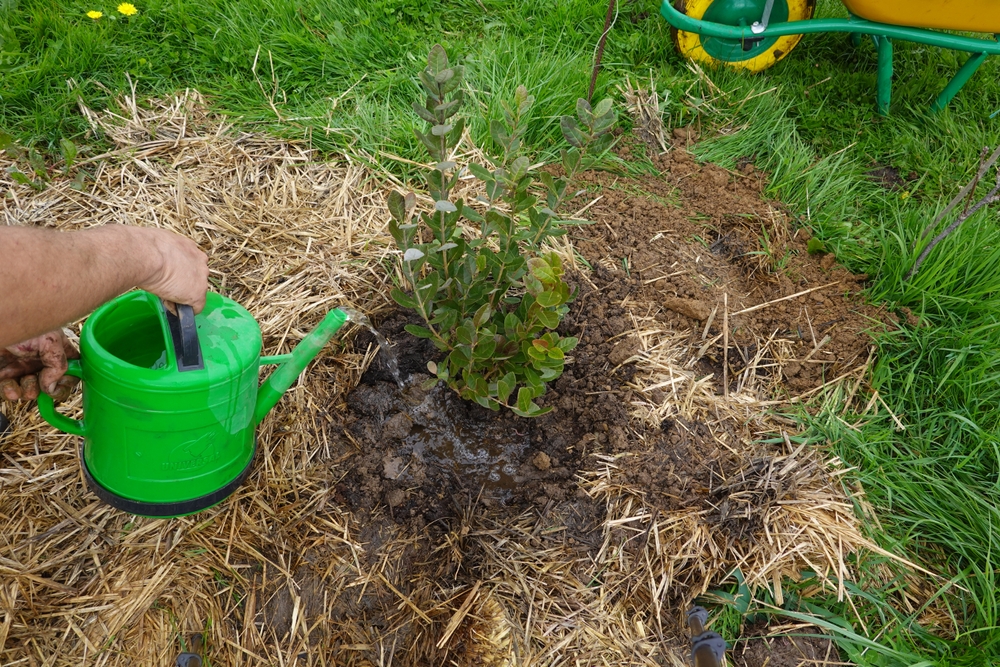How to Take Care of New Trees During the Summer
- 09
- Jun
Newly planted trees don’t root deep, at least not right away. The top few inches of soil dry out quickly once the temperature climbs. Wind pulls moisture faster than it can be replaced, and sun exposure only makes it worse.
Taking care of new trees in the heat isn’t complicated, but it depends on noticing small things before they slip out of range. Most of what helps won’t look like much, just quiet adjustments that keep the stress from stacking up.
How to Take Care of New Trees During the Summer Heat in Omaha & surrounding areas?
Start by Checking Under the Mulch
Surface dryness doesn’t always mean the roots are dry, and cool mulch isn’t a guarantee of moisture held underneath. The only way to know is to reach in and press down. If the soil is dry two or three inches below, the water didn’t stay where it was needed.
It doesn’t take long to check a few spots around the base. Some areas hold better than others, especially if the tree sits on a slope or takes wind from one side more than the other. Even if the top looks fine, the soil beneath can be struggling.
Water Slowly So it has Time to Soak In
A quick spray often just runs off. It cools the surface, darkens the top layer for a few minutes, and then it’s gone. A hose on a slow trickle or a bucket draining through a few small holes works better; the water moves down through the soil at a pace the roots can use.
Morning is usually best, it gives the ground a chance to absorb moisture before the sun starts pulling it back out. Evening is also fine, as long as the soil hasn’t already been baked dry through the afternoon.
Shade Can Prevent Midday Stress
When the sun hits hard between late morning and mid-afternoon, the canopy shows it. Leaf tips start to curl, and new growth wilts before the end of the day. If that same exposure happens again and again, it builds into lasting heat stress.
You don’t need to cover the tree entirely. Anything that breaks the light for a few hours will help. A section of shade cloth clipped to two stakes, a chair set on the sunny side, even a temporary panel leaned toward the west. What matters is blocking direct sun during the most intense stretch of the day.
Early Signs Show Up in the Leaves
Afternoon droop isn’t always a concern; most trees wilt slightly in the heat. What matters is whether the canopy recovers overnight. If it still looks heavy the next morning, something’s been off for more than a day.
A few yellowing or dropped leaves aren’t unusual, but when multiple branches stay curled or lose color across two or more days, the tree is signaling that the roots didn’t get what they needed. That’s when to double-check how long your watering sessions run, whether the mulch has shifted, or if the shade coverage needs adjusting.
Keep Checking, Even when Nothing Looks Wrong
Some mornings, everything looks fine. The canopy holds shape, the soil feels close enough to damp, and nothing obvious is out of place. Still, take a moment to check the soil. Press into the ground in a new spot, move the mulch a bit, watch how the top reacts to a breeze passing through. It won’t always show you what changed, but sometimes it will.
Young trees don’t send clear warnings of heat stress. They decline slowly, and by the time the stress is obvious, it’s already set in. That’s why the routine matters; not because something’s wrong, but because things change fast when it gets hot out.
Arbor Hills Tree Farm & Nursery Omaha
We provide the Highest Quality Field Grown Nebraska Trees and Shrubs – directly to our customers, at the lowest possible price.
Whether you are looking for trees for:
- new home landscaping
- wind blockage
- commercial or residential
Simply select the tree(s) you want, and they will be ready for pickup or delivery the following Saturday Morning. The trees are easy to handle and plant. Click here for more information.



